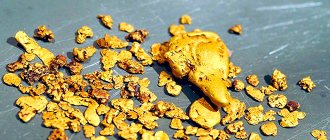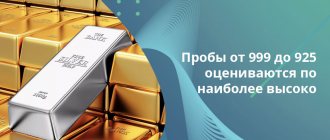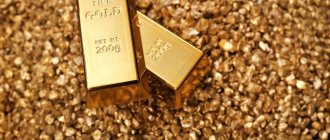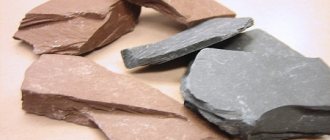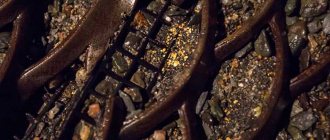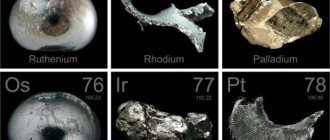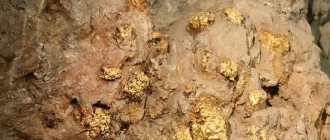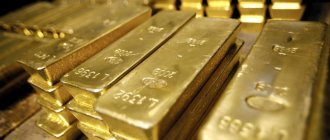Minerals are required for the development of industry, agriculture, and construction. The life and development of any region depends on them. Our region has many of them: salts, oil, natural gas, coal, peat, various ores, gold, diamonds, etc.
Finding minerals is not an easy job. In earlier times, people who searched for ore were called ore miners. Currently, geologists are engaged in the exploration of underground resources.
The name “Permian period”, known throughout the world, is also a geological concept. The Permian period was discovered in 1841 the English scientist Roderick Murchison , who, during an expedition on the banks of the Yegoshikha River, discovered previously unexplored deposits of centuries-old rocks. This is how Perm appeared in the name of one of the geological periods.
What is our Perm land rich in?
In the area of the cities of Solikamsk and Berezniki, the world's second largest deposit of salts, Verkhnekamskoye, is located: rock, potassium, potassium-magnesium. From a depth of approximately 90 - 200 m and up to 600 m they lie in thick layers. First comes rock salt, then potassium-magnesium salt, and even lower - potassium salt in combination with rock salt. The underlying layer is again rock salt. Geologists jokingly call this deposit a layer cake.
The Verkhnekamskoe salt deposit was formed in a distant geological era. About 200 million years ago there was a sea in our region. Under the influence of sunlight, the water heated and evaporated. From the bitterly salty sea water, salts precipitated and gradually accumulated, especially at the bottom of shallow bays. The sea retreated several times, became shallow, and then filled with water again. Finally, the sea receded and disappeared. Over millions of years, a huge deposit of stone, potassium, potassium-magnesium salts, snow-white, blue-gray, orange, red, was formed.
Most often, rock salt is colored pink or yellow.
Pure rock salt (halite) is colorless, transparent and easily soluble in water.
The use of rock salt began several centuries ago. In many places on the Upper Kama, where groundwater comes close to rock salt layers, so-called brines and salt springs have formed.
Brine well
Having learned about this natural wealth, Novgorod merchants, the Kalinnikov brothers, arrived here in the 15th century. On the banks of the Borovitsa and Usolka rivers they organized salt production and built several saltworks and residential buildings. This marked the beginning of the construction of the Sol Kamskaya settlement, from where the city of Solikamsk originated. Here they began to pump out brines and boil salt from them. Table salt at that time was worth its weight in gold and was sold for a lot of money. In the middle of the 16th century (in 1558), merchants and industrialists, the Stroganovs, came here, having secured a charter from Tsar Ivan the Terrible for the right to own these lands. From that time on, the economic development of the Kama region began. The Stroganovs significantly expanded salt extraction and salt production. Permian salt was exported for sale to various cities in our country and abroad.
Many people worked at the Stroganovs' salt mines. Salt making brought untold wealth to merchants. And the saltworks workers have retained from those times the nickname “Permyak - salty ears”, reminiscent of how they had to carry heavy bags of salt on their backs, causing salty dust to fall on their faces, ears and hands, corroding the skin. This caused the ears to become inflamed and stick out to the sides.
In the center of Perm there is a monument
"Permyak - salty ears."
Permian salt was in demand, and for a long time Verkhnekamye was the “main salt shaker” of Russia.
With the discovery of cheaper self-planted salt in the Volga lakes Elton and Baskunchak, salt production on the Upper Kama decreased sharply.
Rock salt is used in the food and chemical industries.
Potassium and potassium-magnesium salts were discovered in the twentieth century. Within the city of Solikamsk there is the Lyudmilinskaya well, during the drilling of which (1906) N.P. Ryazantsev discovered the first potassium in the Russian Empire. This well was named after Ryazantsev’s wife Lyudmila Vasilievna. In 1925, near the Lyudmilinskaya well, at a depth of 92 meters, deposits of pinkish potassium salts - sylvinite - were discovered.
Their reserves turned out to be very large. This salt is the raw material for the production of potash fertilizers, glass, etc., necessary for plants.
In 1927, under a layer of rock salt, geologists discovered deposits of potassium-magnesium salts of dark red and orange color. From magnesium salts, a very valuable light metal, magnesium, is obtained, which is used to produce durable alloys. This is what airplane and ship parts are made from!
One day, geologists drilled a well in the area of the village of Verkhnechusovskie Gorodki to determine the boundaries of the ancient salt sea. This was in 1928. The work was supervised by one of the most famous geologists of the Urals, Pavel Ivanovich Preobrazhensky . He did not even imagine the possibility of discovering oil in the Kama region. There was no salt at the drilling site. They wanted to liquidate the well, but P.I. Preobrazhensky insisted on deepening it. Already in 1929 , a rock filled with oil was raised from a depth of 328 m. And even deeper they discovered a film of oil. This was the first Permian oil !
Minerals of the Perm region: complete list, features and location
From Masterweb
The presence of sufficient mineral reserves is a guarantee of successful development of industry and economy. The prosperity of the region depends on deposits of mineral salts, oil, natural gas, diamonds, metals and coal. The well-being of the Perm region is directly related to the pace of mining. There are more than 500 names in the region.
Dolomites, gypsum, lime, marble, anhydrite, marl, and chrome ores are represented. As well as mineral pigments, sand, expanded clay, clay, strontium. Minerals of the Perm region, which are of paramount importance for the region:
- salt;
- oil.
In addition to them, the lands are abundant in a number of other sought-after minerals, chemical elements and metals:
- iron ore;
- coal;
- peat;
- diamonds;
- gold;
- volkonskoite;
- rubidium;
- bromine;
- iodine:
- strontium;
- platinum;
- anhydrite;
- limestones;
- gypsum;
- uvarovite.
The extraction of black gold in the Volga region began relatively recently, about a hundred years ago. The drilling of the first wells took place under the leadership of the scientist and geologist Pavel Ivanovich Preobrazhensky. The work was carried out several kilometers from the border of the rural settlement of Verkhnechusovskie Gorodki. In 1929, the first oil was obtained from the well.
A little later, minerals in the Perm region were discovered in the area of the settlements of Kueda, Dobryanka, Krasnokamsk and Polazny. The largest oil deposits are located near Chernushki and Os. Some deposits are still subject to development.
Village "Golden Crafts"
A village was created at the site where miners were extracting precious metals from rocks. 1824 is considered the official date for the start of mass mining of placer gold. A year later, almost 2.5 kilograms of the precious metal were mined.
After 6 years, production increased tenfold and amounted to about 44 kilograms. The record year at that time was 1948 - then 350 kilograms of gold were mined, and in parallel, prospectors in the same year extracted almost 250 kilograms of platinum. These were the first major gold mining figures throughout the country.
At the same time, copper mines began to be actively developed. In that century, copper was in great demand. Therefore, all the main efforts were aimed at processing this particular ore. Only prospectors who independently worked on the territory paid attention to the gold mines. Using their own funds, they organize the production and extraction of gold in the area of the village.
The village is known not only as the country's first developed gold placer deposit. The country's first diamonds were also discovered on its territory.
Black gold
The local oil has a rich charcoal color. It is viscous and thick. It lies at great depths. Therefore, the extraction of such a valuable mineral in the Perm region is associated with colossal financial investments. Geologists believe that black gold deposits appeared in these places during the Devonian period.
Advantages of Volga oil:
- excellent chemical properties;
- high quality;
- its processed products can be used in the aviation industry.
To date, exploration work has been completed at 200 fields in the region. Oil and gas production is underway.
Development of salt making in the 15th-16th centuries
Basically, salt production involved pumping out brines and evaporating them. An important fact of that time is that table salt could not be bought so easily. It could be purchased at a price that not everyone could afford.
Soon the Kama region came into the possession of other owners, who received a royal permit from Ivan the Terrible. In the middle of the 16th century, the merchants Stroganovs, engaged in industry, became the owners of the lands. Since then, salt mining has reached a new level and glorified the entire Perm region. Minerals were sold within Russia and exported to neighboring countries. The economic development of this area brought significant income and made it possible to successfully develop the industry.
Peat and coal
The largest deposit of this mineral is the territory adjacent to the village of Shabunichi. It supplies fuel to about 230 industrial enterprises in the region. Quarrying has been going on for over 70 years. There is also peat in Krasnovishersk, Gainy, Nyrob, Kochevo, and Chastinsky municipal district.
The colossal deposits of peat in these places are a strategic guarantor of the well-being of the fuel industry of the Volga region. The list of minerals mined in the Perm region also includes coal. But its number in the region is small.
Historical reference
The Russian Empire had been mining gold since the end of the 17th century. The first large-scale mines appeared in the Perm region. The first industrial enterprises for the production of precious metal began to form there.
Deposits of the precious metal were discovered completely by accident in 1745. The discoverer was Erofei Markov, a resident of the village of Shartash, located on the Berezovka River.
The publication of information about the discovery marked the beginning of a gold rush. The lack of control over the mines and the lack of qualified specialists is the reason that the first decades of excavation were carried out exclusively in an artisanal way without control and accounting.
The Legend of the Lost Gold of the French
When the search for gold became widespread, miners from abroad joined its production. Some officially received permission to develop mines, others masked their interest. Thus, the French owner of an iron casting enterprise entered into an agreement with local residents for the extraction of ore.
Soon a rumor spread through the surrounding villages that in addition to ore, gold veins had also been discovered at the excavation sites. According to one version, the owner of the enterprise ordered that when casting iron ingots, cavities were left inside, into which molten gold was then poured. The “ore” was transported along the Vishera River using a barge.
During one of the raftings the ship received serious damage. Water began to flow into the cargo compartments and due to the large weight of the goods, the barge sank. Having learned about this, the owner of the enterprise urgently arrived. His nervous appearance and despair became further proof for the population of the villages that the ship was transporting not only cast iron.
In addition, almost immediately the Frenchman gave the order to search the bottom of the river. A great reward was promised to whoever found the ingots and brought them ashore. However, despite all efforts, they were not found.
First major finds
70 years since the first discovery of gold-bearing veins, the extraction of the precious metal was carried out using artisanal methods. Prospectors found placers in streams and river mouths and washed them thoroughly. Due to the fact that the work was going on steadily, people did not see the point in changing anything in the production technology.
Only at the end of the 19th century did prospectors begin to find gold nuggets. Despite the fact that they were all small and weighed no more than 15-20 grams, it became clear that it was necessary to organize the development of mountain ranges.
Soon after the start of excavations, the first large deposits of the precious metal were discovered. Already in 1890, the mass of mined pieces of pure gold reached 0.5 kg.
The development of mountain ranges instantly increased the number of total production. According to rough estimates, prospectors mined about 50 tons of gold annually. By the beginning of 1914, the total weight of the mined metal was about 1000 tons.
Changes in the region's mining policy
The revolution in the Russian Empire forced most foreign contractors to leave the dangerous territory. This led to a decrease in gold production. A few years later, local residents again began searching for the precious metal, and soon the active development of the Far East and Siberia began.
By the end of the first half of the twentieth century, gold mining in the Perm region decreased to a minimum. The remaining mining enterprises were retrained to produce other valuable resources.
Diamonds
The share of mining of precious stones in the subsoil of the region is no more than 0.2%. Their value exceeds 20% of the total valuation of all diamond products obtained on the territory of the Russian Federation. Perm stones are of high quality. Eight out of ten diamonds mined in the Volga region are used in the jewelry industry.
Precious minerals of the Perm region do not have a pronounced shade. They have a high degree of transparency. Their faces are distinguished by smooth, rounded edges. Fifteen years ago, a 35-carat diamond was discovered in the region. The length of its longest side is 20 mm. The size of the other part is 17 mm.
According to information published on the pages of the Perm Regional Server, minerals are mined today in the following areas:
- Krasnovishersky.
- Gornozavodsky.
- Cherdyn.
- Krasnokamsk.
- Alexandrovsk.
Volkonskoit
The Volga region is the only region in the world whose lands have industrial deposits of this natural material. In addition to Russia, volkonskoite is found on the African continent. This stone is used to produce bright green paint. It does not fade in the sun, does not lose its consumer properties over time, does not warp or deform.
The pigment shows resistance to acids, alkalis and mineral oils. It retains its original color for centuries. Volkonskoite has a lot of fans. The most famous is the painter Pablo Picasso. He actively used paints made from this mineral.
Areas of application of volkonskoite:
- softening hard water;
- oil purification;
- refining;
- production of enamel;
- glaze production;
- ceramic craft;
- pottery.
The mineral stone was found at the beginning of the 19th century. Its deposits were discovered in the vicinity of the village of Efimyat. There are several versions of the origin of this unusual name for the stone. It is believed that the natural mineral was named in honor of Maria Nikolevna Volkonskaya, the wife of the Decembrist Sergei Volkonsky. If you believe this version, then the revolutionary’s wife crossed the territory of the Perm Territory twice.
Attractive tourist spots
The unique nature of the Perm region attracts tourists, researchers and travelers from all over the world. There are 325 natural objects recorded here that are protected by the state and are of particular value.
The jewel in the crown of attractions is the famous Stone Town. People called it the Devil's Settlement. Just imagine, a dense and dark forest, in the middle of which there are rocky outcrops. They are connected to each other in such a way that they formed unusual corridors and tiers, like the ruins of an old city. Usvinskie Pillars and the caves of Sukhoi Log became an amazingly beautiful phenomenon. To see this miracle of nature, you need to go to the valley of the Usva River, where the stone Usva Pillars stretch along the river, like a huge stone fence.
Both the natural structures themselves and their names are shrouded in some mystery, sometimes even having sacred meaning. The Devil's Finger rock, which in its shape resembles a human finger, has become like a magnet for tourists.
The nature of the Perm region amazes with its beauty, diversity and depth. So we gradually approached the study of the Kungur Ice Cave. To descend into it means to travel into the Ural winter. There are many unknown passages in the cave, but if you count the length of all the studied corridors, it will be 5.7 km. The cave boasts a huge number of lakes; there are about 70 of them and 58 grottoes. Inside each grotto you can see ice crystals, large stalactites and stalagmites.
Local residents have preserved many legends and stories about the Vetlan stone. It is located on the Vishera River. Climbing up the sheer cliff system is not easy, but it is worth it, there is an observation deck at the top. The nature of the Perm region has been a muse for writers of all times and peoples. K.G. Paustovsky once visited here. V.P. can boast of wonderful stories and miniatures. Astafiev, inspired by the nature of this region.
Landscape features
The diversity of the region's topography explains the presence of so many types of natural resources. The territory of the region is bordered by plains and mountain ranges. Salts and other sedimentary rocks appeared in the lands of the Volga region during the existence of the Perm Sea. The reservoir was located in the region more than 300 million years ago.
Its disappearance is associated with the active growth of the Ural Mountains. Stone plateaus crushed the Permian Sea, which led to the gradual drying out of the reservoir. The water disappeared, but the minerals remained. Today they are mined and used in various industries.
General information about the Perm region
The Perm region is part of the Volga Federal District. Was formed on December 1, 2005. Previously called the Perm region, to which the Komi-Permyak Autonomous Okrug was annexed.
In the Komi language, the region is called the word “Parma”, which means a hill covered with spruce forest. It is believed that the name “Perm” comes from the word “Parma”. Residents of the region are called Permyaks.
Geographically, the Perm region belongs to the Western Urals and is located at the junction of Europe and Asia. Its area is 160,600 square meters. km, which is approximately 1% of the area of Russia.
Minerals of the Perm region: complete list, features and location
The presence of sufficient mineral reserves is a guarantee of successful development of industry and economy. The prosperity of the region depends on deposits of mineral salts, oil, natural gas, diamonds, metals and coal. The well-being of the Perm region is directly related to the pace of mining. There are more than 500 names in the region.
Dolomites, gypsum, lime, marble, anhydrite, marl, and chrome ores are represented. As well as mineral pigments, sand, expanded clay, clay, strontium. Minerals of the Perm region, which are of paramount importance for the region:
In addition to them, the lands are abundant in a number of other sought-after minerals, chemical elements and metals:
The extraction of black gold in the Volga region began relatively recently, about a hundred years ago. The drilling of the first wells took place under the leadership of the scientist and geologist Pavel Ivanovich Preobrazhensky. The work was carried out several kilometers from the border of the rural settlement of Verkhnechusovskie Gorodki. In 1929, the first oil was obtained from the well.
Potassium-magnesium resources
Much later, near Solikamsk, Ryazantsev N.P. managed to discover deposits of potassium-magnesium salts. This important discovery for geologists happened while drilling a well, which was later named in honor of the discoverer’s wife Lyudmila. And a couple of decades later, in the vicinity of the Lyudmilinskaya workings, geologists found pink potassium salt, which has the scientific name sylvinite.
In the process of studying the found area, scientists found that the abundance of subsoil could provide the entire Perm region with glass and potash fertilizers for agricultural production. Minerals in the same area gave the developers another surprise just a year later: under a thick layer of rock salt there was a layer of salt deposits, which included magnesium.
From such dark red salts it was later possible to obtain a low-melting metal, which is used in shipbuilding and in the design of aircraft.
Black gold
The local oil has a rich charcoal color. It is viscous and thick. It lies at great depths. Therefore, the extraction of such a valuable mineral in the Perm region is associated with colossal financial investments. Geologists believe that black gold deposits appeared in these places during the Devonian period.
Advantages of Volga oil:
- excellent chemical properties;
- high quality;
- its processed products can be used in the aviation industry.
To date, exploration work has been completed at 200 fields in the region. Oil and gas production is underway.
Mineral salts
Residents of the region began to receive their first salt hundreds of years ago. Scientists and historians are still guessing about the exact date of the beginning of mining in the Perm region. The name of the person who came up with the idea of boiling the salt also remains unknown. Only written documents mention certain merchants Kalinnikovs, who specialized in boiling salt.
Their craft was adopted by the Stroganovs, who managed to oust products from Balashikha and Vychegda from the Russian salt market. The region produces not only table salt, but also potassium salt. According to information from a textbook on the environment for 4th grade, minerals in the Perm region are concentrated in the Verkhnekamsk and Krasnovishersky districts. The lands near the settlements of Bereznyaki and Solikamsk are abundant in potassium salts.
Local chemical industry enterprises specialize in their processing and production of mineral fertilizers. They produce industrial and edible salt. They supply raw materials for the titanium-magnesium plant.
This type of mineral in the Perm region is mined a few kilometers from the village of Sarany. It is the only one in the entire region. In the Volga region, the products of local ore mining enterprises are highly valued.
Iron ores have been mined in these parts for more than two hundred years. Peter I began to develop the local deposits. His geologists carefully explored the foothills of the Urals. They obtained 500,000 pounds of iron. Ores are popular minerals and rocks in the Perm region. Only in the era of Peter the Great, a huge number of guns, cannons, cannonballs and other military supplies were cast from them.
Ore
This type of mineral in the Perm region is mined a few kilometers from the village of Sarany. It is the only one in the entire region. In the Volga region, the products of local ore mining enterprises are highly valued.
Iron ores have been mined in these parts for more than two hundred years. Peter I began to develop the local deposits. His geologists carefully explored the foothills of the Urals. They obtained 500,000 pounds of iron. Ores are popular minerals and rocks in the Perm region. Only in the era of Peter the Great, a huge number of guns, cannons, cannonballs and other military supplies were cast from them.
Peat and coal
The largest deposit of this mineral is the territory adjacent to the village of Shabunichi. It supplies fuel to about 230 industrial enterprises in the region. Quarrying has been going on for over 70 years. There is also peat in Krasnovishersk, Gainy, Nyrob, Kochevo, and Chastinsky municipal district.
The colossal deposits of peat in these places are a strategic guarantor of the well-being of the fuel industry of the Volga region. The list of minerals mined in the Perm region also includes coal. But its number in the region is small.
Diamonds
The share of mining of precious stones in the subsoil of the region is no more than 0.2%. Their value exceeds 20% of the total valuation of all diamond products obtained on the territory of the Russian Federation. Perm stones are of high quality. Eight out of ten diamonds mined in the Volga region are used in the jewelry industry.
Precious minerals of the Perm region do not have a pronounced shade. They have a high degree of transparency. Their faces are distinguished by smooth, rounded edges. Fifteen years ago, a 35-carat diamond was discovered in the region. The length of its longest side is 20 mm. The size of the other part is 17 mm.
According to information published on the pages of the Perm Regional Server, minerals are mined today in the following areas:
- Krasnovishersky.
- Gornozavodsky.
- Cherdyn.
- Krasnokamsk.
- Alexandrovsk.
Expansion of resource extraction territory
In addition, valuable types of marble were mined in this area, from which famous sculptors of Europe created their cultural objects.
Each year, teams of prospectors actively moved up the beds of local rivers from the location of the village, penetrating into the most inaccessible places. Thanks to their efforts, new deposits and placers were discovered.
Maps of places with possible deposits of valuable ores and precious stones were compiled. At the same time, deposits of building materials and raw materials were discovered. Until 1900, the region began to be actively explored by geological communities.
Volkonskoit
The Volga region is the only region in the world whose lands have industrial deposits of this natural material. In addition to Russia, volkonskoite is found on the African continent. This stone is used to produce bright green paint. It does not fade in the sun, does not lose its consumer properties over time, does not warp or deform.
The pigment shows resistance to acids, alkalis and mineral oils. It retains its original color for centuries. Volkonskoite has a lot of fans. The most famous is the painter Pablo Picasso. He actively used paints made from this mineral.
Areas of application of volkonskoite:
- softening hard water;
- oil purification;
- refining;
- production of enamel;
- glaze production;
- ceramic craft;
- pottery.
The mineral stone was found at the beginning of the 19th century. Its deposits were discovered in the vicinity of the village of Efimyat. There are several versions of the origin of this unusual name for the stone. It is believed that the natural mineral was named in honor of Maria Nikolevna Volkonskaya, the wife of the Decembrist Sergei Volkonsky. If you believe this version, then the revolutionary’s wife crossed the territory of the Perm Territory twice.
Landscape features
The diversity of the region's topography explains the presence of so many types of natural resources. The territory of the region is bordered by plains and mountain ranges. Salts and other sedimentary rocks appeared in the lands of the Volga region during the existence of the Perm Sea. The reservoir was located in the region more than 300 million years ago.
Its disappearance is associated with the active growth of the Ural Mountains. Stone plateaus crushed the Permian Sea, which led to the gradual drying out of the reservoir. The water disappeared, but the minerals remained. Today they are mined and used in various industries.
Sources:
https://gnilomedova.59313s016.edusite.ru/p5aa1.html https://www.nastroy.net/post/poleznyie-iskopaemyie-permskogo-kraya-polnyiy-spisok-osobennosti-i-mestonahojdenie https://www. syl.ru/article/381476/poleznyie-iskopaemyie-permskogo-kraya-polnyiy-spisok-osobennosti-i-mestonahojdenie
